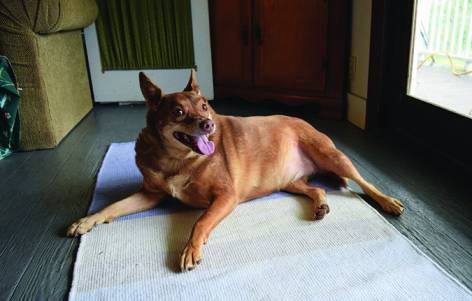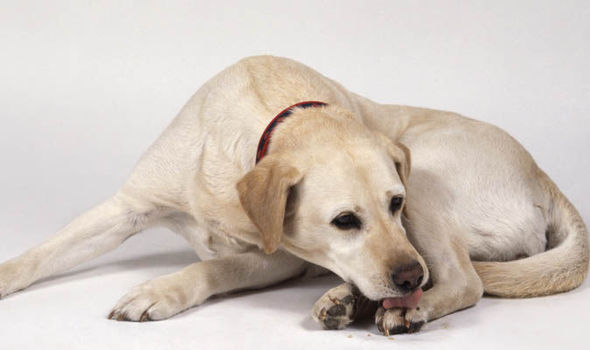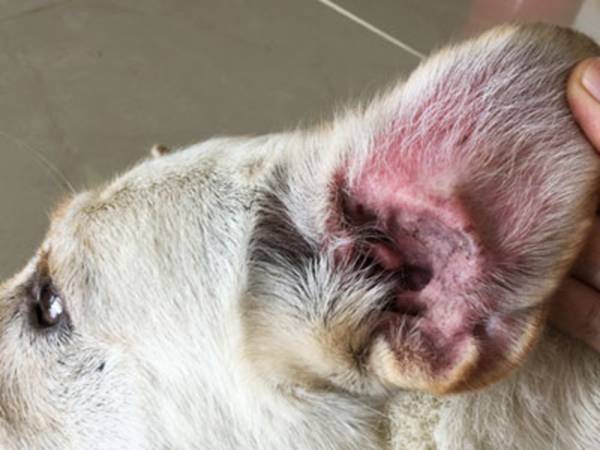Air pollution is increasingly becoming a major problem for humans around the world. Did you know that air pollution can also be bad for our pets? Air pollution effects dogs and cats just like humans.
Connect with a verified veterinarian in minutes. Licensed vets are available 24/7 to answer your questions. No need to worry about your furry family member.
Air Pollution – What Is It?
Air pollution is contaminated air, either outdoors or indoors. The air becomes chemically (or biologically) altered, making it poisonous to humans, animals and plants. Air pollution is generally called smog and can be a factor in many diseases for people and their pets.
Smog is made up of a mix of pollutants, including:
- Nitrogen dioxide
- Carbon monoxide
- Particulate matter
- Sulfur dioxide
- Lead
- Ground-level ozone
The air contaminants that cause the most health problems (when inhaled) are carbon monoxide, particulate matter, lead and ground-level ozone. Each of these causes damage to the lining and tissues of the airways in the nasal passages and lungs.
Smog contains dangerous particles known as particulate matter. These particles are small enough to be inhaled and become trapped in lung tissue, leading to asthma and other air way diseases. The result is chronic inflammation that causes physical changes within the lung tissue, nasal air ways and more. Air pollution can also cause heart problems in pets and their pet parents.
What Causes Air Pollution?
Some causes are natural, while others are manmade. Natural causes of air pollution include volcanic eruptions, forest fires, etc. On the other hand, man-made air pollutants result from manufacturing, burning of fossil fuels (exhaust from cars, wood-burning fireplaces, household and agricultural chemicals.
Anything that can chemically alter the air and make it poisonous is a problem—whether from man-made or natural sources.
Wherever it comes from, air pollution can be extremely harmful to us and our fur babies

Review symptoms, medications & behavior to keep your pets healthy with a Vet Online in just minutes.
Ask a Vet Live NowPets and Air Pollution
Some research has been done on pets and the effects of indoor and outdoor pollution. However, this is still a relatively new area of study. Some studies have shown that dogs (and cats) living in the home of a heavy smoker suffer irreversible changes in their lungs, leading to reduced lung function and inflammation of the lung tissues.
Not only does this issue apply to living in the home of a smoker, but pets living in areas near forest fires can also be affected. You may be living several miles away from a fire or other source of pollution, but the winds aloft carry the smoke and particulate matter in the air. Then we and our pets inhale the dirty air and can get sick.
So, what’s a pet parent to do? How do you protect your canine companion from the harmful effects of air pollution? You might consider an air pollution mask for your pup.
Pollution Mask for Dogs
Do such things even exist? Yes—you bet they do! A dog mask for smoke can help protect your fur baby’s lungs. There are some anti-pollution masks for dogs available on the market, but they’re still relatively hard to find. We did the research and here’s what we found:
1. K9 Mask Pure Air X1 Dog Air Pollution Filter Muzzle Mask
This dog N95 mask fits snuggly over your dog’s muzzle, protecting his airways. The pollution mask comes with 3 replaceable muzzle air filters and is rated N95. An N95 mask protects against 95% of particles that are 0.3 micron in size or larger. The PM2.5 filter offers protection against particulate matter that’s smaller than the width of a human hair. The activated carbon filter works to contain contaminated air particles.
This mask muzzle with filter is adjustable for a comfortable fit and to make it easier for your dog to breathe. The mask even includes an exhale vale that works to release moisture from your dog’s breath and exhaled hair. The mask also features adjustable straps for a snug fit and flexible panels to allow your dog’s head to move easier. The mask is made in the U.S.A.
2. WinnerEco Pet Clothes Pet Dog Anti-Fog Mask Protective
This dog respirator mask can be used as a dog air filter mask. The mask fits over your pup’s muzzle, with adjustable elastic straps that fit over the head (behind the ears) and around the neck. The mask is made of non-woven fabric.
Can a dog wear an air pollution mask made for humans? Yes, but there are some things to keep in mind. If your dog has a short muzzle, is a small or medium dog, you may be able to persuade him to wear a mask. However, larger dogs and dogs with longer muzzles may be hard to fit with a mask made for humans. Air pollution masks for humans are not made for pets that have long noses or large muzzles.
Don’t forget that to be effective, the mask must fit snuggly over your dog’s mouth and nose. Otherwise, gaps in the fit of the mask allow contaminated air to reach your pup’s airways.
Another thing to keep in mind is that your fur baby may at first balk at wearing a mask. They may try to take it off, bite it, etc. Don’t be surprised. Here, you can try to use positive reinforcement training methods to help your dog adjust to wearing a mask.
It may take some time and effort, but your buddy would benefit from wearing a mask during periods with large amounts of air pollution
Other Ways to Protect Your Dog from Air Pollution
Aside from an air pollution mask, there are a few other things you can do to keep your dog safe from contaminated air.
1. You and your pets should stay inside, with the doors and windows closed.
2. Use your air conditioner to filter out the air both in the house and in the car. (In the car, use the “recycle air” function, so your car’s air conditioner doesn’t draw air from outside. It will only recycle the air from inside the car).
3. Limit time spent outside for walks and potty trips.
4. Both you and your pets need to stay hydrated.
5. Be aware of the signs of respiratory distress and eye inflammation. These are indicators that let you know your fur baby is having trouble coping with the dirty air.
Signs of Respiratory Distress in Dogs
Dogs, like their humans, show physical signs they’re having trouble coping with air pollution. Some of the most common symptoms include:
- Swelling and/or inflammation (eyes, mouth, skin, airways)
- Open-mouth breathing
- Lethargy
- Weakness
- Difficulty breathing
- Coughing, sneezing, vomiting or no appetite
- Increased drooling
- Confusion
- Fainting
- Seizures
- Nasal discharge
- Fever
- Cyanosis (blue discoloration of the skin)
If your dog is showing any of these signs or a combination of symptoms, then it’s necessary to get him to the vet as soon as possible. These are all symptoms of acute respiratory distress, which is a medical emergency. Your dog’s life could be in danger.
Dogs Most Effected by Air Pollution
Puppies and senior dogs are most susceptible to respiratory distress. Dogs with certain health problems are also put at higher danger by air pollution:
- Dogs that have lung issues, such as bronchitis or asthma
- Brachycephalic (meaning short-muzzled) dogs (including Bulldogs, Boston Terriers & Pugs)
Acute Respiratory Distress Treatment
Your vet will take a complete medical history and will ask about the onset of symptoms. They will also ask about possible causes or incidents that could have brought on the breathing trouble. The vet may run some blood tests, serum biochemical tests, urine tests and a blood gas analysis. Your pup may also need chest x-rays and possible an echocardiogram to check his heart and lungs.
After diagnosis, your vet will determine the best course of action. He may give your dog supplemental oxygen and treat any other symptoms your fur baby’s experiencing. If your dog’s breathing is very difficult, the vet may need to put your dog temporarily on a ventilator to aid his breathing. Other treatments may include IV fluids, pain killers, corticosteroids, etc.
If caught early, most dogs will fully recover from the effects of breathing polluted air.
Keep Your Dog Active and Entertained Indoors
What should you do if you and your pup have to stay inside? Entertainment for you and your dog is the answer! There’s a lot you can do inside the house.
Training: work on your pup’s training—anything he needs work on. Exercises like sitting and staying are easy to do indoors. Just be creative and see what you can think up!
Games: play with your dog! He always needs and wants to be the center of your attention. Now you have the opportunity to lavish him with love and fun. Play doggie games such as fetch, tug-o-war, and more. Create a game where you hide treats around your home and then let your dog go on a search and sniff mission. Be sure to use his favorite treats. Make it as difficult or as simple as necessary, depending on your dog’s age and activity level.
Hallway ball chase and fetch: do you have a long hallway? Then this is a great place to throw a ball and let your dog chase and retrieve it! You’ll both have loads of fun, while wearing off excess energy.
Dog puzzle games: dogs love puzzles and challenges. Here, you could try something like the Kong Extreme Dog Toy. This would be another great toy to use for playing the game of hallway fetch. Your pup will enjoy fetching this fun chew toy, but he’ll have even more fun trying to get the snack you put inside!
Another fun game is the Outward Hound Nina Ottosson Dog Tornado Treat Puzzle Dog Toy. This game provides both fun and mental stimulation for your fur baby. It can help reduce boredom on a day when air pollutions high and you need to stay indoors. It’s also another way to use up some of his energy on a smog day!
We’ve covered a lot of information in this article but hope that it gives you a better understanding one how air pollution can affect your dog. Try to limit exposure to outside air as much as possible. You might even consider a doggie air pollution mask for when your dog needs to go outside. Avoid contaminated air as much as possible and your dog will maintain healthy airways.
Related Sources: Research Gate Science Direct NCBI
Connect with a verified veterinarian in minutes. Licensed vets are available 24/7 to answer your questions. No need to worry about your furry family member.

Tom
Tom has always loved to write since he was little - he wanted to be either a writer or a veterinary doctor, but he ended up being a professional writer while most of his works are based on animals. He was born in San Francisco but later moved to Texas to continue his job as a writer. He graduated from the University of San Francisco where he studied biotechnology. He is happily married and a soon to be father!
Review symptoms, medications & behavior to keep your pets healthy with a Vet Online in just minutes.
Ask a Vet Live Now



